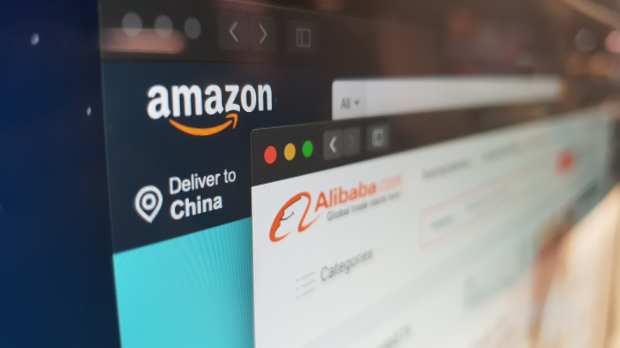Why Amazon Picked Pinduoduo To Tackle The Chinese Market

When you can’t beat ‘em, join ‘em.
Or: If at first you don’t succeed … try, and try again.
China is a market that most Western firms — especially online marketplaces — covet.
But the walls are high.
Amazon has learned that firsthand, having shuttered its domestic site in China this past July.
Amazon still has at least some businesses in China — such as through Kindle, where there are “flagship” stores, and on Alibaba, for instance — but the July exit seemed a tacit admission that breaking into a market where the biggest competitors carry a collective market share of more than 80 percent is rough sledding.
By the time of the July closure of the China-based marketplace, Amazon had grabbed only about 1 percent of the market.
The consolation prize had been that Chinese consumers still could (and can) buy through Amazon platforms located outside the country (such as in the U.K. and Europe). It’s been established that having a presence inside China has value.
To that end, as reported earlier in the week, the eCommerce giant has opened an online store, establishing a presence on the Chinese eCommerce site Pinduoduo.
The move is one that casts Amazon’s lot in China with a platform that aims at grabbing top of mind and wallet with consumers located in China’s “lower-tier city residents,” as Reuters reported. And amid that focus, the Chinese eCommerce site offers discounts on items sold across the platform.
For Amazon, of course, there is the appeal of reaching the site’s 529 million monthly active users, and where consumers in what are known as “first-tier” cities spend an average $710 USD equivalent annually.
Amazon’ relationship with Pinduoduo takes shape as a three-day sales campaign that begins as of Nov. 28, where promotions are tied to overseas items such as Nintendo Switch consoles and Australian baby formula.
It seems Amazon is testing the continued appeal of foreign goods, having noted that the pop-up site will offer up roughly 1,000 branded foreign items.
The spending power of the Chinese consumer still remains strong, even though growth has been slowing. Key competitor Alibaba shone a spotlight on that fact when it reported Singles’ Day sales of more than $38 billion USD equivalent last month.
Earlier this year, as reported in China Daily, reports issued at the second Digital China Summit showed that internet users in the country topped 829 million, with a penetration rate of about 59 percent in 2018, up nearly 4 percent from the previous year. That penetration rate has some runway in rural areas, where the penetration rate is a bit less than 40 percent. Overall online payments users number more than 600 million, while digital commerce sales, overall, came in at a bit more than $4.4 trillion.
But strategy is everything. And, as has been documented in this space, China is a market best served when firms, global though they may be … think local.
That’s part of the strategy advocated in recent days to PYMNTS by Nick Tubb, vice president of commercial affairs at Ingenico ePayments. As he told PYMNTS. “When it comes to payments, of course, companies entering the market should not be spending all the money to reach potential consumers and then not allow them to pay in the ways they want.”
Thus, local payment options remain essential. In addition, he took note that Chinese consumers tend to find their way toward new purchases through recommendations, giving a social aspect to commerce that any player — large or small — should consider when making a foray into the country. TechCrunch reported last year that among Pinduoduo’s features, users share product information across social networks such as WeChat, and can invite peers to form “shopping teams” that in turn get discounts on what they buy.
The partnership has a shelf life, at least so far. Amazon and Pinduoduo have said the relationship will extend through the end of December. But it offers evidence of the interest even the mightiest global firms have in China — and the willingness to explore new ways to get there.
